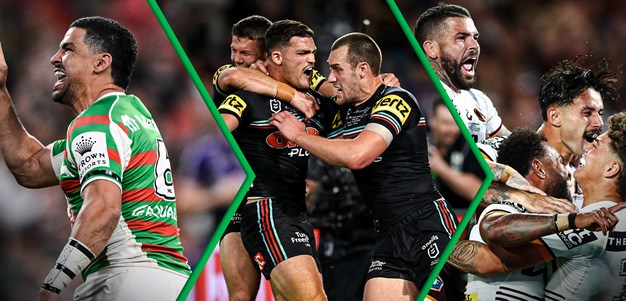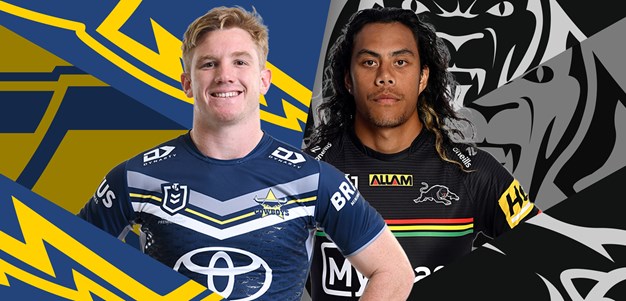It shouldn’t surprise anyone to learn that international soccer is a little ahead of rugby league when it comes to trends. Roughly 265 million people play the round ball code worldwide, while our numbers apparently hover somewhere below one million.
But would you believe that soccer computer games are a decade ahead of flesh-and-blood rugby league?
In 2002, the game “This Is Football” introduced a feature where players could push the L2 and R2 buttons and simulate diving on the ground and trying to get a penalty. This year – if you listen to some people – the NRL has finally caught up with Playstation 2 and the “dark art” of diving.
Of course, staying on the ground is linked to the other big non-Origin talking point right now – the shoulder charge. There’s a crackdown on this practice which, logically, should attract divers to it like flies.
On Saturday night, Jerome Ropati wasn’t accused of taking a dive, but rather with having a knee injury unrelated to the shoulder charge which got Rooster Boyd Cordner reported for making contact with the Warrior fullback’s head.
“Referees are setting a very dangerous precedent,” Roosters captain Braith Anasta told referee Steve Lyons. “It’s going to be a long year.”
On Friday, Gold Coast replacement Luke O’Dwyer told reporters he was “not a fan of shoulder charges” after copping one from Canterbury’s Sam Kasiano, for which Kasiano too was reported. No diving there either, but last Monday South Sydney admitted Dave Taylor faked an injury as part of a set play.
“There’s a whole untidiness of our game at the moment,” Roosters coach Brian Smith said. “Teams are laying down ... eating the clock up.”
So where do we draw the line? How do we catch the hits that deserve to be caught without encouraging every player in the competition to – figuratively speaking – hit L2 and R2? Last week South Sydney’s Michael Crocker berated Cronulla’s Paul Gallen for suggesting that staying down was now part of the NRL.
But as North Queensland coach Neil Henry said on radio at the weekend: “We lost a game last year when Issac Luke stayed down when he was clipped by James Segeyaro and it was in golden point. They kicked a penalty goal and the game was over.
“What annoys me sometimes is that they say ‘play-on’, they go back, and once they go to the video referee upstairs and there seems to be a bit of contact high, they automatically go to a penalty.
“I think the players know this: once it goes upstairs and it’s a review, you’re likely to get a penalty nine times out of ten. Every hit is on its merits. If a player’s stung, sometimes he can’t get up. That happens sometimes as well. But there’s a bit of gamesmanship at the moment.”
Henry says there is an answer: if it’s not picked up by the on-field officials, leave it to the match review committee. On the ABC, he seemed to suggest curtailing the current powers of the video referee so players wouldn’t try so hard to get his attention so often.
“The referees have to make a judgement call sometimes and say ‘play on’,” said Henry.
“I don’t think it’s going to go the same was as soccer. What I think is if the referee says ‘play on’, you play on... you don’t have to worry about the video referee viewing it and 10 out of 10 times it’s a penalty.
“It’s a tough game. There’s going to be incidental contact with the head. We just need to get those rules consistent.
“They don’t go back and say ‘get up and play the ball’ too often. I think we’re getting a bit protective about our kickers too....”
Oh dear, that’s a whole other column and computer game...


